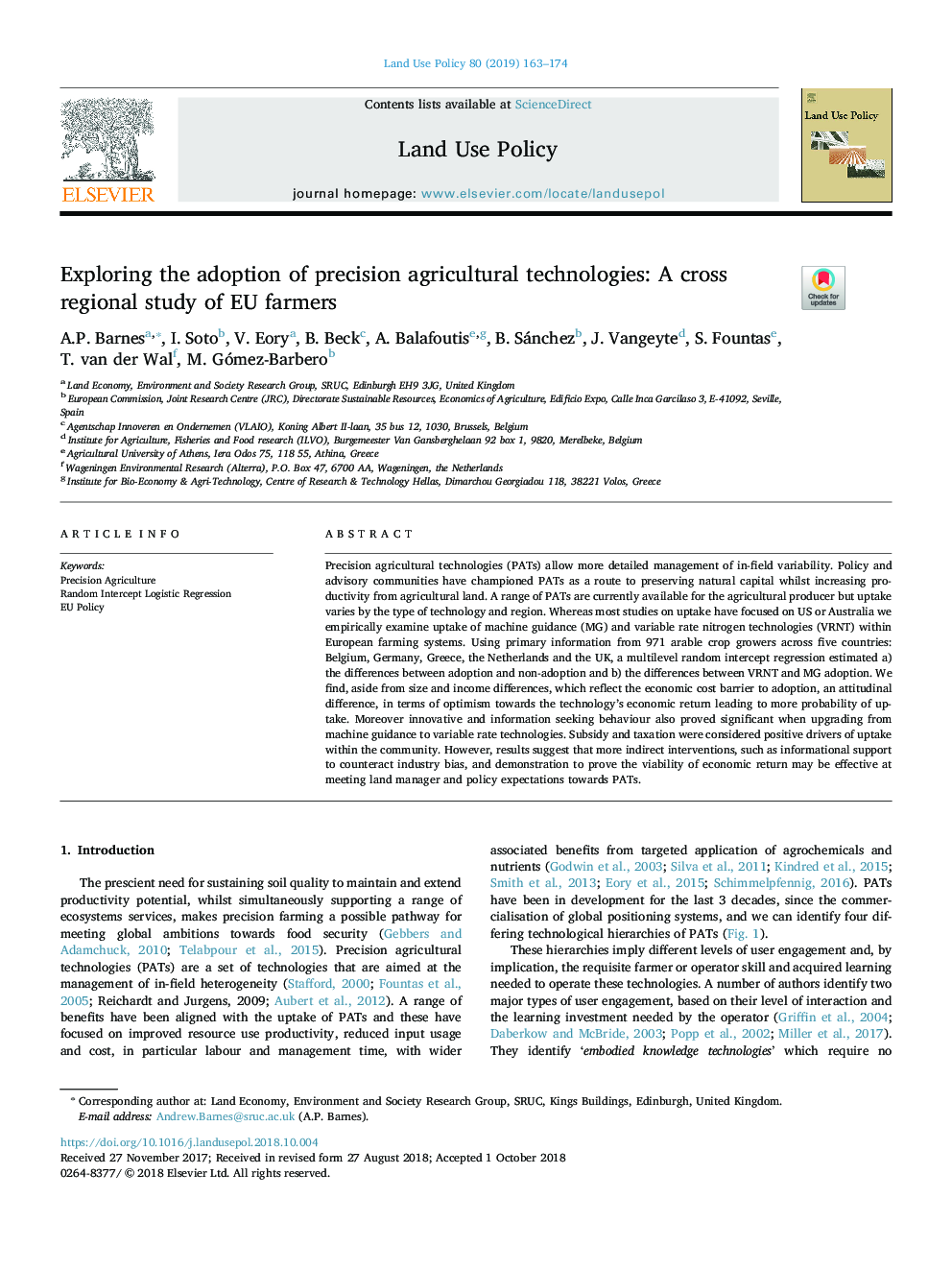| Article ID | Journal | Published Year | Pages | File Type |
|---|---|---|---|---|
| 11012815 | Land Use Policy | 2019 | 12 Pages |
Abstract
Precision agricultural technologies (PATs) allow more detailed management of in-field variability. Policy and advisory communities have championed PATs as a route to preserving natural capital whilst increasing productivity from agricultural land. A range of PATs are currently available for the agricultural producer but uptake varies by the type of technology and region. Whereas most studies on uptake have focused on US or Australia we empirically examine uptake of machine guidance (MG) and variable rate nitrogen technologies (VRNT) within European farming systems. Using primary information from 971 arable crop growers across five countries: Belgium, Germany, Greece, the Netherlands and the UK, a multilevel random intercept regression estimated a) the differences between adoption and non-adoption and b) the differences between VRNT and MG adoption. We find, aside from size and income differences, which reflect the economic cost barrier to adoption, an attitudinal difference, in terms of optimism towards the technology's economic return leading to more probability of uptake. Moreover innovative and information seeking behaviour also proved significant when upgrading from machine guidance to variable rate technologies. Subsidy and taxation were considered positive drivers of uptake within the community. However, results suggest that more indirect interventions, such as informational support to counteract industry bias, and demonstration to prove the viability of economic return may be effective at meeting land manager and policy expectations towards PATs.
Keywords
Related Topics
Life Sciences
Agricultural and Biological Sciences
Forestry
Authors
A.P. Barnes, I. Soto, V. Eory, B. Beck, A. Balafoutis, B. Sánchez, J. Vangeyte, S. Fountas, T. van der Wal, M. Gómez-Barbero,
